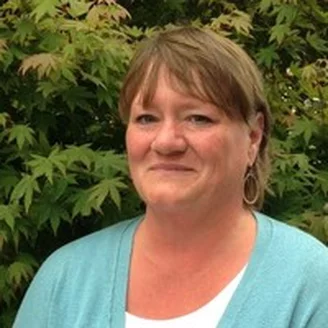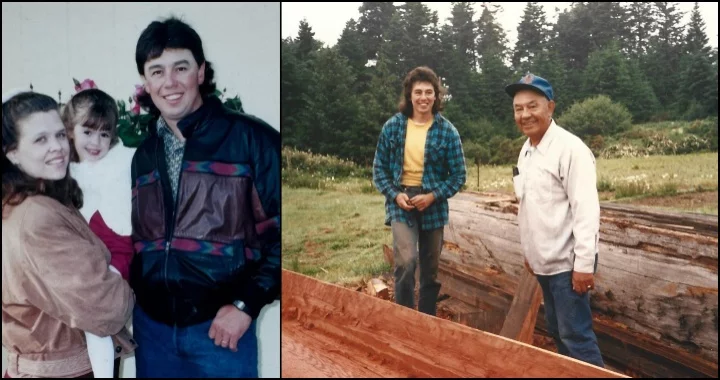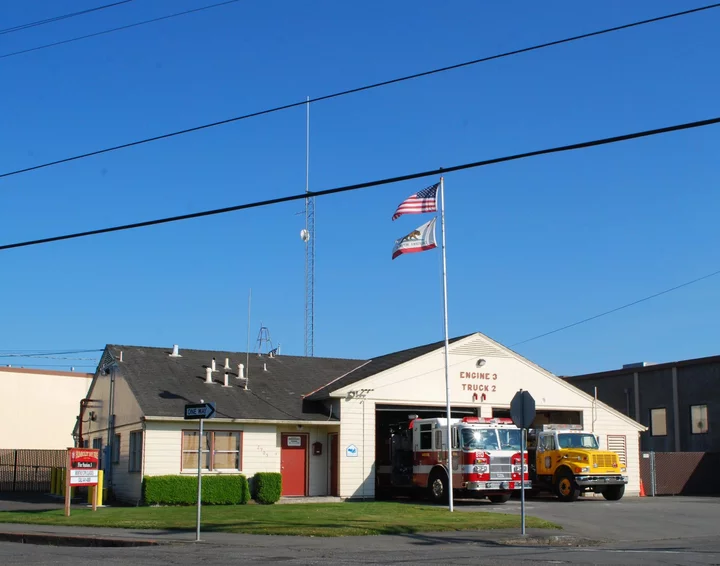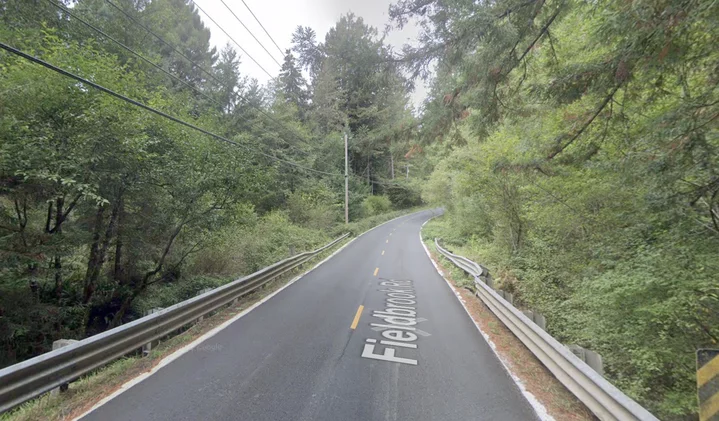State Senator Mike McGuire Appoints First 5 Humboldt’s Mary Ann Hansen to Early Childhood Policy Council
LoCO Staff / Tuesday, Nov. 19, 2024 @ 9:58 a.m. / News
Press release from the office of Senate president pro tem Mike McGuire:
SACRAMENTO – The Senate Rules Committee, chaired by Senate President pro Tempore Mike McGuire (D-North Coast), has appointed Mary Ann Hansen of Humboldt County to the Early Childhood Policy Council.
“Mary Ann Hansen is an exceptional and effective leader. No one works harder on behalf of our kids and she will bring passion and dedication to the Early Childhood Policy Council,” Pro Tem McGuire said. “Kids are California’s best investment, so the policies shaped with Mary Ann’s leadership will be some of the most important policies coming out of the State Capitol. We look forward to working with Mary Ann in this new role and our continued collaboration with the Council.”
Hansen has served as the Executive Director of First 5 Humboldt since 2015. Her leadership has been transformative to the organization, which is now helping more underserved kids than ever. As a result of her life-changing work, Senator McGuire selected Hansen as the 2022 North Coast Woman of the Year. She has been a champion for expanding equitable access to high-quality and robust childcare, and during the pandemic, fought to expand health and wellness opportunities for Humboldt County’s youngest residents.
“I absolutely love working with Senator McGuire and this is an incredible honor to be appointed to the Policy Council,” said Hansen. “I look forward to rolling up my sleeves and continuing my work at a statewide level, ensuring every child in California has access to high-quality early education and robust services.”
A Humboldt County native, Hansen was a faculty member at Cal Poly Humboldt in the Child Development department for two decades, while also holding various consulting positions for First 5 Humboldt and the Hoopa Valley Tribe in the area of early childhood education. She is a licensed Transdisciplinary Infant-Family Early Childhood Mental Health Practitioner and is a member of the National Association for the Education of Young Children. In 2022, she served as a subject matter expert for the California Infant and Early Childhood Mental Health Consultation Network work group.
The Early Childhood Policy Council is one of the preeminent organizations in the State focused on all aspects of California’s early childhood education system. The Council advises the Governor, Legislature, and State Superintendent of Public Instruction on early education policy and priorities.
Mary Ann Hansen lives in Ferndale. The term is at the pleasure of the Senate Rules Committee, not to exceed six years. Compensation is reimbursement for actual and necessary expenses.
BOOKED
Today: 3 felonies, 12 misdemeanors, 0 infractions
JUDGED
Humboldt County Superior Court Calendar: Today
CHP REPORTS
No current incidents
ELSEWHERE
RHBB: Reports of Multi-Vehicle Collision at 5th and V Cause Traffic Delays in Eureka
RHBB: Yurt Fire Reported East of Willow Creek on Thanksgiving Morning
KINS’s Talk Shop: Talkshop November 27th, 2025 – Jason Esselman
Governor’s Office: Governor Newsom proclaims Thanksgiving Day
The Arcata Jogg’n Shoppe, a Storied North Coast Institution, Celebrates Its 50th Birthday
Dezmond Remington / Tuesday, Nov. 19, 2024 @ 8:04 a.m. / Business
Runners gather at the Jogg’n Shoppe for its 50th anniversary.
If you have less than an hour to buy a new pair of running shoes, do not ask the guy in the Jogg’n Shoppe any questions about the photos on the wall, the shirts hanging in the windows, or the running paraphernalia scattered around the store, because that hour will be sacrificed to a long discussion about the characters and races that make up Humboldt’s distance running history. But it is an interesting history, full of tales of all-consuming rivalries and legendary training logs. The Jogg’n Shoppe has been around for all of it.
The Jogg’n Shoppe celebrated its 50th birthday last week. Founded in 1974 by Humboldt State cross-country coach Jim Hunt and Arcata High School coach Chuck Ehlers, it’s currently owned by Mike Williams, who ran for HSU back when Hunt was still a coach. The shop is old enough that some of the first shoes Hunt sold were made by Blue Ribbon Sports — the company Bill Bowerman founded that would later become Nike.
Williams, 63, first worked at the Jogg’n Shoppe in the 1980s, when he ran for HSU. In 2002, he became a part-owner of the Eureka location, which closed in 2005. He’s been the sole operator of the store since. At its peak during the mid-1970s, the store had locations in Arcata, Eureka, Fortuna and Brookings, Ore., though that only lasted for a couple years. Now, only the Arcata location is still open.
“It all happened at a perfect time,” Williams said. “The running boom was going on after the ’72 Olympics with Frank Shorter and [Steve] Prefontaine — that just kind of fueled that fire.”
Distance running exploded in popularity in the early 1970s nationally, but Humboldt was also home to a large pool of talented runners. HSU was second at the Division III national championships three times during the ’70s and won the Division II championships when they moved up in 1980. Williams has an encyclopedic knowledge of the dozens of personal records set and races run during this time period, and asking him about local legends like 2:15 marathoner Bill Scobey or 1992 Olympic Trials winner Mark Conover will elicit from him stories of the days when the Trinidad-Clam Beach run fielded 2,300 competitors from around California and even the smaller community races had sub-30 minute 10K talent.
Races in Humboldt aren’t as fast as they once were, but the local running community has found a home in the Jogg’n Shoppe. Running clubs meet out front and Williams helps organize local races. For its 50th anniversary, Williams hosted over 100 people in the store last week. Nike representatives from Oakland came bearing gifts. Williams thinks the store provides services beyond simply selling running equipment.
“It’s getting people motivated whether they’re walkers or runners, just getting people outside and doing something, and when people get together for events, not only competition, it’s feeding off the good vibes, the community thing,” Williams said. “The club, everyone who shows up for that is so upbeat and into it…a lot of the old guys, they can’t run but they still meet and walk and they love it! They’re sitting there chitting and chatting. My dad dealt with depression, pretty severe sometimes, when he became a runner and got part of that group — man, it changed my dad’s life. It really did. He got a new group of buddies, like a new family.”
Williams will likely retire within the next few years, but there are several different parties interested in buying the store.
“I would love to keep going,” Williams said. “I think it can. The internet changed everything obviously, but it can make it. … It’ll keep going, there’s no doubt about it.”
“Having a shop, it’s a place where people can meet. A lot of people come in and yak with me. It’s just fun talking to people. A lot of people, they come in and go, ‘I’m too slow for racing.’ Oh! Walkers, everybody’s welcome … Don’t worry about the times, just go out there and participate.”
How California Keeps Transgender Student Athletes on the Court as Bans Unfold Across the Country
LoCO Staff / Tuesday, Nov. 19, 2024 @ 7:54 a.m. / Sacramento
Illustration by Gabriel Hongsdusit, CalMatters
Despite broad protections for transgender student athletes, California has become the latest battleground in the growing national movement to remove them from women’s college sports.
In one case, two public universities in California are leaving the National Association of Intercollegiate Athletics after it imposed a ban in April on transgender athletes participating in women’s sports.
In a much more publicized case, four teams in the National Collegiate Athletic Association’s Mountain West Conference have forfeited games against San José State’s volleyball team this fall after one of its players identified a teammate as transgender and joined a lawsuit against the NCAA, opposing its policy allowing transgender women to compete in women’s sports. Last Wednesday, volleyball players from those universities filed a separate lawsuit against the conference, the conference commissioner, and California State University officials for the same reason.
“California has robust non-discrimination protections for LGBTQ+ students, specifically transgender students, at all levels,” said Tony Hoang, executive director for Equality California, a nonprofit civil rights organization.
California is one of 24 states in the country that allow transgender student athletes to play on sports teams that match their gender identity. California enshrines protections for transgender students in the state education code and in policies for all three public college and university systems. Transgender athletes are allowed to compete by the largest athletic associations operating in the state — the California Interscholastic Federation at the secondary level, and the California Community College Athletic Association and the NCAA at the collegiate level. California goes further, even, than the U.S. Department of Education, which has yet to enact proposed protections for transgender athletes in its Title IX anti-discrimination policy.
Despite all of this, transgender athletes in California are still susceptible to legal and social pressures playing out across the country. Twenty-six states ban transgender women from competing in women’s sports at any level. In some of those states, lawsuits against national athletics organizations are sweeping California into the battle.
President-elect Donald Trump has said he will ban transgender students from competing in sports altogether. “We’re not going to let it happen,” he said on Oct. 15 at a town hall in Georgia when he was asked about transgender athletes in women’s sports.
Shiwali Patel, the National Women’s Law Center’s senior director of safe and inclusive schools, called bans on trans athletes “attempts to weaponize civil rights law to justify discrimination against an already vulnerable group of students.”
Since AB 1266 took effect in 2014, California students from K-12 to collegiate levels have had the right to “participate in sex-segregated school programs and activities, including athletic teams and competitions, and use facilities consistent with his or her gender identity, irrespective of the gender listed on the pupil’s records.”
The onus is on public colleges and universities, and not athletics associations, to adhere to California’s protections for transgender student athletes. However, the mounting pressure against athletics associations is affecting California college athletes nonetheless.
Lawsuit against NCAA gains momentum
So far this fall, the women’s volleyball teams at Boise State University in Idaho, Utah State University, University of Wyoming, and The University of Nevada, Reno, have forfeited conference matches against the San José State University Spartans. The forfeits came after Brooke Slusser, a San José State player, publicly claimed that one of her teammates is transgender. In statements to the press, Slusser has argued that the teammate poses a physical risk to other women players during practice and competitions. CalMatters is not naming the teammate to preserve her privacy. San Jose State has not confirmed whether the student is transgender.
In September, Slusser joined more than a dozen other female athletes in the Georgia-based lawsuit Gaines v. NCAA, filed in March. According to the suit, the plaintiffs allege that transgender athletes “disproportionately burden female athletes by reducing female competitive opportunities, forcing female athletes to compete against males in sex-separated sports, depriving women of equal opportunities to protect their bodily privacy, and authorizing males to access female safe spaces necessary for women to prepare for athletic competition, including showers, locker rooms and restrooms.”
Last week, on Nov. 13, Slusser and 11 other plaintiffs from colleges in the Mountain West Conference filed a lawsuit in Colorado claiming the NCAA, the conference, San José State and other universities “have engaged in a purposeful and illegal assault on the rights of women athletes” by allowing transgender athletes to compete. The suit calls for transgender women to be deemed ineligible to compete on women’s teams. Attorneys representing the plaintiffs in both lawsuits did not respond to interview requests.
At San José State, “there have been no reported injuries involving either our team or opponents,” said Michelle Smith McDonald, the university’s senior director of media relations. “We don’t anticipate any changes to our current roster between now and the end of the season.”
San José State student athletes are governed under the NCAA and Mountain West Conference policies and the college adheres to Cal State anti-discrimination policies. San José State will stay in the Mountain West Conference through the 2031-32 school year, according to Smith McDonald.
“The Mountain West Conference prioritizes the best interests of our student-athletes and takes great care to adhere to NCAA and [Mountain West] policies,” according to a statement provided by Javan Hedlund, senior associate commissioner of the conference. He did not comment on the Colorado lawsuit.
The National Women’s Law Center also joined Gaines v. NCAA as a defendant on behalf of the association, arguing in its legal filing that “while Plaintiffs purport to speak on behalf of all women, they do not represent the interests of women who are transgender and want to continue participating in NCAA sports, nor the cisgender women who want to continue participating with them.”
The National Women’s Law Center has advocated for gender equity in sports since its founding in 1972, the year Title IX was enacted. “We know that trans inclusive school policies around sports are essential to fulfill Title IX’s broad promise of protecting well-being and education opportunities for all women and girls,” Patel said.
If the plaintiffs prevail at the district court, Patel said the case will go to an appellate court. Because the Biden administration has not enacted a proposed Title IX policy for transgender athletes, uncertainty remains within the courts, Patel said. “But what we do know is that the circuit courts that have heard this issue, have come out in favor of trans student athletes,” she said.
Members of the NCAA Gender and Equity Task Force did not respond to CalMatters’ multiple requests for comments.
The potential impact of banning transgender athletes
For transgender student athletes, the significance of having access to team sports goes beyond fairness. States with anti-trans laws show worse mental health outcomes for transgender youth. Bonnie Sugiyama, the director of San José State’s PRIDE Center, said transgender students particularly stand to benefit from access to sports in school.
“You get leadership skills, you get community, it’s great for your mental health to be able to play,” Sugiyama said. “To restrict people based on their identity … just because you don’t know where to put them? That’s not really an acceptable response.”
“We should be talking about opportunities for everybody. At the end of the day, people just want to be able to play sports.”
— Bonnie Sugiyama, director of San José State’s PRIDE Center
As a lifelong multi-sport athlete and former high school basketball coach, Sugiyama understands that athletics associations must create policies that cultivate a safe and fair playing field.
Sugiyama points out that blanket bans on transgender women don’t take into account whether an individual took hormone suppressants before adolescence, which has a major impact on how the body develops, nor do bans reflect how trans athletes compare to the range of physical traits of the average cisgender player of their sport.
“We should be talking about opportunities for everybody,” Sugiyama said. “At the end of the day, people just want to be able to play sports.”
Transgender athlete bans impact all athletes, research has found. A Center for American Progress report using CDC data says that in states that banned trans students from playing with their peers, fewer girls overall are playing school sports.
“On the other hand, where states include and support trans students, more girls are playing sports,” Patel said.
Federal anti-discrimination policies are unclear on transgender athletes
Transgender students were first written into Title IX in 2016 when the Obama administration specified that students could participate in sex-segregated activities and access bathrooms and locker rooms consistent with their gender identity. Former Secretary of Education Betsy DeVos rescinded those protections during Trump’s first presidency. On Aug. 1, the Biden administration enacted new protections for transgender students, reversing DeVos’ revision but not including protections for transgender athletes specifically. The Biden administration has not provided a reason for the omission.
The renewed Title IX policies met backlash across the country even before they were enacted. At least eight lawsuits resulted in injunctions in 26 states blocking the revisions from taking effect.
“Instead of focusing on the true mission of Title IX, which is to protect women and girls from discrimination in education and to protect and promote women’s and girls’ sports, the Defendants attempt to rewrite it entirely [to] institutionalize the left-wing fad of transgender ideology in our K-12 system and tie school funding to it,” one lawsuit out of Kansas reads.
A national injunction resulting from the Kansas lawsuit included more than 300 California K-12 schools and at least 50 colleges and universities, but those schools are still obligated to follow California’s education code.
“Federal law is the law of the land. But states are allowed to pass laws that go above and beyond what federal law does, and California has done that,” said Jennifer Chou, a civil rights lawyer who is the American Civil Liberties Union Northern California’s head of gender, sexuality and reproductive justice.
Athletics associations fracturing on transgender athlete issue
Without clear Title IX protections for transgender athletes, athletics associations across the nation have established their own policies governing the participation of trans students in college sports. In April, the National Association of Intercollegiate Athletics banned transgender women from participating in their women’s leagues. The association has 237 member universities across the U.S., including nine private institutions in California and two public four-year universities.
In September, Cal Maritime decided to separate from the association by June 2025. UC Merced also announced its intent to leave the association and join the NCAA starting in fall 2025.
According to Cal Maritime’s chief of staff, Karyn Cornell, interim president Michael Dumont’s review of the education code drove the split from the association. In a letter to the campus, Dumont explained that the association’s ban on transgender students contravenes state law and California State University policies, and affirmed the university’s commitment to provide “an inclusive and equitable community that values diversity and fosters mutual respect.”
“They’re doing the right thing, and they’re standing up for people like me, which is good,” said former Cal Maritime student Sophie Scopazzi, who once pushed for gender-neutral uniforms at the university. In November 2021, Scopazzi filed a Title IX complaint when some Cal Maritime student leaders sent emails and tweets with hateful, anti-LGTBQ+ comments. Then-President Thomas Cropper called the language “offensive” but said it was protected free speech. Scopazzi appreciates Dumont’s actions now.
“It’s nice to have a president that’s willing to say, ‘This is against our values. What they’re doing in [other states] is against what we stand for here at Cal Maritime,’” said Scopazzi, who graduated in 2023.
“An overwhelming majority of courts have consistently upheld legal protections for transgender individuals, particularly in cases involving anti-discrimination laws.”
— Tony Hoang, executive director for Equality California
While there are over a dozen collegiate athletic associations in the United States, the NCAA and the NAIA are the primary national associations for four-year universities. The NCAA has over 1,000 institution members nationally, with 60 in California.
The NCAA’s policy on transgender athletes, established in 2011, is currently “under review.” In April, the NCAA Board of Governors discussed transgender student athletes but did not propose changes to the policy, which was last updated in 2022. The current NCAA policy aligns with the International Olympic Committee’s guidelines for transgender athletes, which ensure that competition is “fair and safe and that athletes are not excluded solely on the basis of their transgender identity or sex variations.”
The committee leaves it to each sports’ governing body to determine its eligibility criteria for inclusion based on hormone levels. In the case of male to female transgender athletes who compete in women’s sports, these criteria typically require hormone level testing at different intervals preceding competitions.
Most community colleges in California also require certain testosterone levels for transgender women to compete in women’s sports. In California, 110 community colleges participate in the state-established California Community College Athletic Association.
“Under 3C2A policy, transgender men and women may compete on men’s teams, but trans women may not compete on women’s teams unless they have completed at least one calendar year of testosterone suppression treatment for gender transition,” according to Mike Robles, director of communications for the association.
Civil rights advocates who spoke with CalMatters believe that attempts to enact anti-transgender policies will fail in California. Hoang of Equality California also believes the lawsuit against the NCAA will be thrown out.
“An overwhelming majority of courts have consistently upheld legal protections for transgender individuals, particularly in cases involving anti-discrimination laws, and we’re hopeful that this case won’t be going anywhere, and it is a publicity stunt,” he said.
###
CalMatters is covering the impact of the national fight over transgender students in California college athletics. Do you have a story to share? Reach out to the College Journalism Network at cjn@calmatters.org.
Amy Elisabeth Moore and Desmond Meagley are fellows with the College Journalism Network, a collaboration between CalMatters and student journalists from across California. CalMatters higher education coverage is supported by a grant from the College Futures Foundation.
CalMatters.org is a nonprofit, nonpartisan media venture explaining California policies and politics.
OBITUARY: Amy Marie (Brazil) Rice, 1978-2024
LoCO Staff / Tuesday, Nov. 19, 2024 @ 6:56 a.m. / Obits
Amy Marie (Brazil) Rice
September 10,
1978 – November 10, 2024
Amy, our beautiful and loving wife, mother, daughter, sister, sister-in-law, auntie and friend of many passed on Sunday November 10, 2024, at the age of 46 due to a motorcyle accident during the Annual United Bikers of Northern California Veterans ride from the Fortuna Veterans Memorial Building to the cemetery in Eureka for a ceremony honoring our Veterans and fallen soldiers.
Amy graduated from Ferndale High School in 1997 and furthered her education at Fredrick & Charles Beauty College graduating on July 14, 2000. Her career began at The Inn Salon in Ferndale located behind the Village Inn. She spent the rest of her career doing what she loved, making her Eel River Valley clients feel special and beautiful.
She always said her greatest accomplishment in life was her son Dane, whom she extremely loved and protected with all she had. She was head-strong and bubbly, the one who always kept our family laughing. She had the biggest heart and went out of her way to do anything for anyone. She loved hard and was loved by so many. She had a smile that would brighten the entire room. She loved all types of music and dancing and was always down to have a good time.
Amy is survived by her loving and handsome son Dane, step-daughter Mariyah Rice, parents Francis and Sharon Brazil, brothers Blaine (Jessie) Brazil and Ross (Nichole) Brazil, nephews Colton and Brody Brazil, nieces Ava Brazil, Cambrya Duncan, Taelynn and Braylee Harper, godparents Rich & Ginger Barber, Chris Rice and Patrick Allen. She also leaves behind numerous uncles, aunts, and cousins.
Amy was preceded in death by her grandparents Joe and Olga Toste, Henry and Anita Brazil, Harold Brazil and Jay Barber.
A Celebration of Life for Amy will be held on Saturday, November 30, at 11:30 a.m. at the Portuguese Hall in Ferndale.
###
The obituary above was submitted on behalf of Amy Rice’s loved ones. The Lost Coast Outpost runs obituaries of Humboldt County residents at no charge. See guidelines here. Email news@lostcoastoutpost.com.
OBITUARY: Kris ‘K.C.’ Lindgren, 1958-2024
LoCO Staff / Tuesday, Nov. 19, 2024 @ 6:56 a.m. / Obits
Kris K.C. Lindgren was born December 11, 1958, in Trinidad, to Axel and Bonnie Lindgren. To his friends and family, he was always known as KC. He passed peacefully at his home in McKinleyville on Thursday evening, November 14, 2024, at the age of 65.
KC was a documented lineal descendant of the Tsurai Village and member of Yurok Tribe. KC was one of six children born to Axel and Bonnie, and was lucky enough to have been able to be raised within the Tsurai Village boundaries. He and his siblings learned how to fish, gather mussels, clam and eat all the same traditional foods his ancestors had that came before him. Though, at the time, it was just a part of life and something fun to do while playing at the beach.
From spring to fall, the Lindgren boys all played baseball and KC wasn’t any different. Their Dad, Axel coached little league, which meant they had a house full of boys most of the year, their own and everyone else’s. Their Mom was gifted in her ability to keep them all fed. KC made a lot of friends this way.
As a young man, KC ocean fished with his brothers near Flat Iron Rock, Seal Rock, Egg Point on up to Patrick’s Point. They would then bring their catch back to their Mom and Dad’s house to clean and prepare. Their Dad always had the smoke house ready and his own special recipe for smoking salmon that was about as tasty as you could get. The brothers also gill netted salmon at the mouth of the Klamath.
KC attended Trinidad Elementary School, then McKinleyville High School where he graduated. During his senior year boxing was popular in Humboldt County. KC spent time boxing from about 1976-1977 with the Eureka Boys Club, training under Gene Campbell and sharing a gym with the Albers brothers and other young Yurok and non-Yurok men testing their speed, strength and endurance through the popular sport. KC, Gary Albers, Mike Dale, Rod Lewis and Lee were runners-up for the Golden Gloves in Albany, Oregon. KC won the first two bouts but was disqualified in the third after it was ruled his hair was too long. His coach, Gene Campbell was quoted in the paper as saying “I couldn’t believe it!” when asked about the disqualification. In another article KC was interviewed about boxing in general and his love of working out and staying fit. He said, “Boxing is the only sport where you can beat the hell out of each other and still be friends afterward.”
After high school, KC went to work in construction and became a cement mason. He helped build many homes, and commercial buildings around Humboldt County such as the Health Sport in Myrtletown. He also helped, along with his brothers Lindy “Hoss” Lindgren and Axel “Tootie” Lindgren, in the construction of the demonstrational Yurok village at Sumeg. Building and carving were a love of his that were nurtured by his Dad, who he helped build traditional Yurok redwood dugout canoes with. He also learned the art and skill of making redwood fans from his Grandpa Axel Lindgren Sr.
After his father’s passing in 1999, KC took on the role of board member of the Tsurai Ancestral Society to help continue the legacy his Dad had started. The Tsurai Ancestral Society is a non-profit organization dedicated to the protection and preservation of the Tsurai Village. It was started in the early 80’s by Axel Lindgren II and continues today. KC carried this role as well as the role of caretaker and devoted family man.
KC met and fell in love with Anna Giuntoli. The two married in 1995 and had their only child, Emily, later that year. As parents, they were so proud of their daughter. Her photos and drawings frequently covered the refrigerator at KC’s parents’ house. After many happy years together, tragedy struck when Anna developed cancer. She fought hard, with KC by her side until the cancer took her in 2014 after 19 years of marriage. KC never remarried and instead continued to care for their daughter, and then took on the role of taking care of his Mom, Bonnie until her passing in 2020. He brought her food, picked her up and dropped her off each day at his brother “Tootie’s” and made sure she was okay when she was home.
During the time he was working and taking care of everyone else, he quietly was dealing with his own health issues. Due to an illness in childhood, he developed a heart condition as an older adult. He received treatment but it wasn’t enough to sustain him long term.
He is preceded in death by his grandparents, Axel Lindgren Sr and Georgia Lindgren, parents, Axel Lindgren Jr. and Bonnie Lindgren, wife Anna Lindgren, sister-in-law Peggy Lindgren, Uncles William Lindgren, Glen Lindgren and Charles Lindgren, Hank Hughes, Fred Vanni, Aunts Louisa (Lindgren) Little, Frances (Lindgren) Meickle, Estella (Lindgren) Fredrikson, Georgia (Lindgren) Fullwider, Dixie (Lindgren) Benedict, Virginia Hughes, and Sally Vanni.
KC is survived by his daughter, Emily Armstrong (Matt), and his 3 grandchildren Briella, Jacob and Thomas Armstrong. His Brothers and sisters Axel “Tootie” Lindgren III, Paris “Joe” Lindgren (Cindy), Lindy “Hoss” Lindgren (Lynn), Kelly Lindgren (Ralph) and Connie Lindgren (Mike). Aunts Wilda Gallacci, Roberta Lindgren, along with many nieces, nephews and cousins to numerous to name.
Per KC’s request there will be no service.
###
The obituary above was submitted on behalf of KC Lindgren’s loved ones. The Lost Coast Outpost runs obituaries of Humboldt County residents at no charge. See guidelines here. Email news@lostcoastoutpost.com.
DREAM FIREHOUSE MAKEOVER! The Living Quarters in the Fire Station by Winco are Getting a Fresh New Upgrade
LoCO Staff / Monday, Nov. 18, 2024 @ 3:36 p.m. / Fire
Curb appeal! Photo: Humboldt Bay Fire.
Press release from Humboldt Bay Fire:
Humboldt Bay Fire Station #3, located at 2905 Ocean Avenue in Eureka, is set to undergo a significant remodel of its living quarters, beginning today. During this renovation, the engine company typically stationed at Fire Station #3 will temporarily relocate to Humboldt Bay Fire Station #1, located at 533 C Street.
The planned updates include the addition of a second bathroom, a more efficient floor plan, a modernized kitchen, and a small expansion to house three upgraded bedrooms. Originally constructed in the late 1950s, this marks the first major renovation for Fire Station #3 since its inception.
While the remodel is underway, no firefighters will be assigned to Fire Station #3. However, the engine company will continue to provide uninterrupted service to the area from their temporary location at Fire Station #1.
California is Renaming 43 Places, Including This Fieldbrook Bridge, to Remove a Derogatory Term for Native Women
Ryan Burns / Monday, Nov. 18, 2024 @ 12:55 p.m. / News , Tribes
It may not be much of a bridge, but it’s there. And its name is now Dulouwirughuqa’n.
###
California officials on Friday officially approved the renaming of more than 30 locations in 15 counties to remove the word “squaw,” which was used for hundreds of years as a derogatory term for Native women.
Among the streets, buildings, cemeteries and other places being renamed you’ll find a small bridge at the southern end of Fieldbrook. Formerly known as Sq__ Creek Bridge, it will henceforth bear the name “Dulouwirughuqa’n,” which is the Soulatluk (Wiyot language) word for Fieldbrook. (Click this link to hear how it’s pronounced.)
Meanwhile, the underlying creek for which the bridge was named has been rechristened “Tip Top Ridge Creek” by the United States Geologic Survey.
This statewide renaming effort, which is intended to address historic injustices and honor California’s Native American communities, originated with Assembly Bill 2022, authored by Assemblymember James C. Ramos (D-San Bernardino), signed by Governor Gavin Newsom and implemented by the California Natural Resources Agency.
The Humboldt County Board of Supervisors approved the new bridge name back in July after staff reached out to the Wiyot Tribe, the Bear River Band of Rohnerville Rancheria and the Blue Lake Rancheria requesting consultation. The Wiyot Tribe made its suggestion, and the Bear River Rancheria concurred.
Across the state local jurisdictions collaborated with Native American tribes to come up with replacement names while adhering to these three priorities:
- Honor the original, traditional, or current name used by the tribes to refer to the geographic feature or place.
- Select names incorporating the local indigenous language(s).
- Preserve the original intent of the geographic names as a historical record of the cultural landscape (using general descriptors and generic terms such as river, creek, mountain, or an appropriate term from the indigenous language of the area), considering the historical, cultural, or ethnic significance of the original name.
“These changes, proposed by local communities in strong partnership with California Native people, allow all Californians to move forward from a past that denigrated Native women and into present that embraces the beauty, diversity and potential that are a hallmark of this state,” California Tribal Affairs Secretary Christina Snider-Ashtari said in a press release.
There remains a small, private road in Fieldbrook bearing the name “Sq__ Creek Road.” Humboldt County Public Works Director Tom Mattson tells the Outpost that since it’s a private road, he doesn’t believe the county has the authority to change it.







